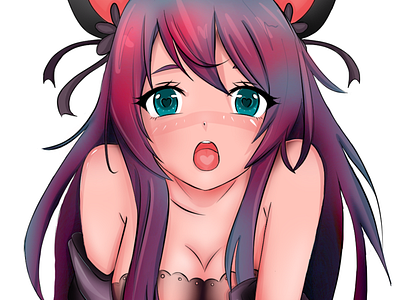 Due to the affect of pornographic photographs in the 19th and 20th centuries, the manga artwork was depicted by real looking characters. From the 16th to the 19th centuries, shunga works have been suppressed by the shogunate. The attribution has been applied retroactively to works equivalent to Urotsukidōji, La Blue Girl, and Cool Devices. However, the re-use of such characters and software of them to any form of setting is in the character of Akatsuka and his Star System; Iyami, Chibita, and different Stars may be in works ranging from very tame and mild for early grade-college kids to extra outlandish, taboo depictions. Adult themes in manga have existed because the 1940s, but some of these depictions have been extra lifelike than the cartoon-cute characters popularized by Tezuka. Depictions of sex and abnormal sex can be traced again by the ages, predating the time period “hentai”. With the usage of hentai as any erotic depiction, the historical past of these depictions is break up into their media.
Due to the affect of pornographic photographs in the 19th and 20th centuries, the manga artwork was depicted by real looking characters. From the 16th to the 19th centuries, shunga works have been suppressed by the shogunate. The attribution has been applied retroactively to works equivalent to Urotsukidōji, La Blue Girl, and Cool Devices. However, the re-use of such characters and software of them to any form of setting is in the character of Akatsuka and his Star System; Iyami, Chibita, and different Stars may be in works ranging from very tame and mild for early grade-college kids to extra outlandish, taboo depictions. Adult themes in manga have existed because the 1940s, but some of these depictions have been extra lifelike than the cartoon-cute characters popularized by Tezuka. Depictions of sex and abnormal sex can be traced again by the ages, predating the time period “hentai”. With the usage of hentai as any erotic depiction, the historical past of these depictions is break up into their media.
Tezuka’s Astro Boy, Metropolis, and Jungle Emperor manga that may come to define the media. Less official terms also in use embrace ero anime (エロアニメ), ero manga (エロ漫画), and the English initialism AV (for “adult video”). Hentai is outlined differently in English. The ero guro movement and depiction of perverse, abnormal and sometimes erotic undertones were a response to curiosity in hentai seiyoku. 99 in these uses, it is the shortened type of the phrase hentai seiyoku (変態性欲) which suggests “sexual perversion”. It is value noting that 変態 is additional shortened to H (etchi), solefire.net the primary letter of its romanization. The manga could be revived two main occasions by way of its history, https://lucioushentai.com first appearing in Shonen Gahosha’s Weekly Shonen King by means of 1972 to 1973, and Kodansha’s Comic BomBom and Tv Magazine from 1987 to 1990. The characters would additionally seem in a 1976 one-shot for Shueisha’s Monthly Shonen Jump (titled “The Return of Osomatsu-kun” for reprints), a 1983 one-shot in Penguin Question journal, and a 1989 special feature for Shonen Sunday titled “Where Are These Famous Characters Now?”.
Another key feature is setting a minimal score. It was Nakamura Kokyo’s journal Abnormal Psychology which began the popular sexology growth in Japan which might see the rise of other standard journals like Sexuality and Human Nature, Sex Research and Sex. Continued curiosity in hentai seiyoku resulted in quite a few journals and publications on sexual recommendation which circulated in the general public, served to establish the sexual connotation of hentai as perverse. The late 1960s introduced a sexual revolution which expanded and solidified the normalizing of the term’s identification in Japan that continues to exist immediately by means of publications corresponding to Bessatsu Takarajima’s Hentai-san ga iku sequence. By the 1950s, the “hentai seiyoku” publications became their very own genre and included fetish and homosexual subjects.

